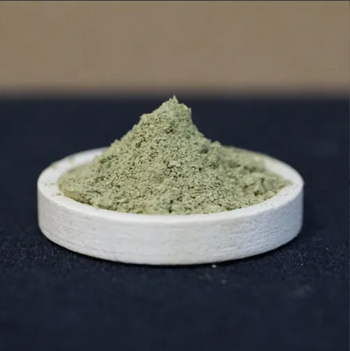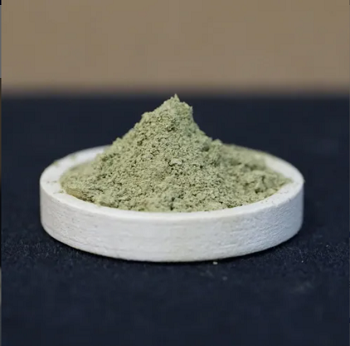Kratom and weed are both recreational plants that made a name for themselves in the botanical market. Unlike the competition, these two never go out of demand. So, what is it about these two herbs that help them stand shoulders above the rest? And more importantly, what’s the difference between them?
In this article, we shall dig further into your queries and try our best to answer them.

Everything There Is To Know About Kratom
The Kratom plant is native to Southeast Asian nations like Thailand, Indonesia, Malaysia, Myanmar, Papua New Guinea, and others.
For at least four centuries, this tree’s foliage has been a part of traditional medicine (maybe even longer).
This plant has just very recently become popular in the West.
Traditionally, the leaves were chewed raw, prepared into tea, or used in recipes. But these days, the leaves may also be processed into powders, capsules, extracts, tinctures, and liquid extracts.
Everything There Is To Know About Kratom And Weed
Of the two substances, weed is far more well-known and has grown in popularity across the country as legalization spread across numerous states. As to where cannabis originated, there are several hypotheses. The prevailing opinion holds that it originated in Central Asian highlands.
Weed is now grown all over the world. Except for the North and South Poles, many herbal strains have been produced to endure practically any environment.
In 2021, 17 states will have legalized marijuana for recreational use, while 36 will have authorized it for medical use.
Tetrahydrocannabinol (THC), a substance found in the cannabis plant’s dried leaves and flowers, gives the herb its effects. When smoking the substance, THC goes into circulation, and you can feel its effect very quickly. But on the other hand, the effects of ingesting Kratom and weed take longer to materialize because liver enzymes first change the THC into a different molecule.
Over 700 cannabis strains are believed to exist, with many crossed to produce new varieties. Additionally, the THC content of each variant may differ. As a result, it’s difficult for users to predict how potent the effects will be unless they are very sure of the strain they are consuming and its THC level.
What’s The Difference Between Their Mechanism Of Action?
A specific mechanism of action revolves around each of the herbs.
This mode of action describes how a substance accomplishes its effect, including which receptors it targets or which bodily systems it can interact with.
Kratom’s Mechanism Of Action
Many different alkaloids influence the action of Kratom. These molecules all interact with various receptors in the central nervous system.
Opiate and adrenergic receptors are the principal targets of these alkaloids, which are responsible for the majority of the effects in the body.
The signals that go up the spinal cord and into the brain use the opiate receptors as a pathway. Before the impulses reach the brain, where they are perceived, they can either strengthen or weaken them.
The control of dopamine in the brain as a component of the reward system also involves the opiate receptors.
On the other hand, the fight or flight system, which gets triggered at smaller dosages, includes the adrenergic system. However, high dosages overwhelm this effect by relying on opiate receptors, which counteract the adrenergic activity.
Weed’s Mechanism Of Action
Similarly to Kratom, cannabis has a range of compounds that work together to produce its effects. There is a class of substances known as cannabinoids. There are well over 100 of these chemicals, but THC (tetrahydrocannabinol), CBD (cannabidiol), and CBC (cannabichromene) are by far the most prevalent.
The primary component of weed that users love is THC. This substance activates the endocannabinoid system, which is interconnected with our neurological system throughout the body. The plant makes bodily changes by activating these receptors in the brain, which releases serotonin.
The effects of other cannabinoids, such as CBD or CBC, are also produced through this pathway, although they lack the psychoactive properties of THC.
Is There Any Interaction Between Kratom And Weed?
The two botanicals compete with one another metabolically and do not directly interact. However, mixing various types and amounts can result in a variety of outcomes.
Many people have developed potent blends to get the most out of both plants. Additionally, although Kratom connects with the body’s opioid receptors and other systems, CBD, THC, and other cannabinoids affect the endocannabinoid system. You may take both of these herbs simultaneously because the acting mechanisms are independent of each other.
Kratom And Weed: Are They Legal?
Various countries have different laws governing the possession, distribution, growth, and use of marijuana. Cannabis is lawful for recreational use in certain nations and decriminalized or even permitted in others.
While weed usage for recreational purposes is legal in many states, it’s important to keep in mind that there are still restrictions on who may use it, how much they can possess, and more regulations regarding its transport.
When it comes to Mitragyna Speciosa, the Drug Enforcement Agency (DEA) wanted to but can’t label it as a controlled substance. That’s because it is not federally regulated.
For the time being, Alabama, Arkansas, Indiana, Rhode Island, Vermont, and Wisconsin prohibit the purchase, sale, or use of Kratom. Although it could be restricted, it is currently lawful in other states. That is because there is no actual proof against the supplement.

Final Thoughts
The primary distinction between the two all-natural herbs is their origins. Weed is derived from the cannabis plant and acts by binding to the endocannabinoid system’s receptors. Kratom, on the other hand, comes from the leaves of the Mitragyna speciosa tree and interacts with the brain’s serotonin and dopamine receptors.
So what distinguishes Kratom and weed from each other? In the end, you must experience it for yourself in order to completely comprehend the differences.
What Dose Of Weed Should I Take?
The ideal weed dosage varies depending on the user’s degree of tolerance. Experts advise a beginning dose of 2.5 mg of THC and a daily maximum of 40 mg. In any case, you should start from a lower dose and gradually go up the ladder.
How Do I Decide Which Of The Two Is Better For Me?
In some circumstances, one may be both safer and more efficient than the other. Nevertheless, the best course of action is to test each of them out and choose the one that best suits your needs.
Where Can I Buy Kratom?
You can buy this botanical from local stores and online vendors. But in contrast to the neighborhood’s restrictions, internet shopping is available from any online manufacturer. You don’t even have to leave your house to receive the supplements because they come right to your door.
But before you make a purchase, be sure the internet merchant you’re dealing with is reliable.
Golden Monk, PureLeaf Kratom, Amazing Botanicals, Super Natural Botanicals, and SocraticSolutions Kratom are all notable names in the industry.


Latest from our blog
Please Read….This is Urgent
In loving memory of Ryan, a special individual who recently passed away, we honor his [...]
Damiana Exposed: Special Look At Turnera diffusa (2023)
Damiana Exposed: Special Look At Turnera diffusa (2023) Damiana is a wild shrub native to [...]
Kanna: A New Look At An Exciting Mood Booster (2023)
What is kanna? Some say the botanical has similar effects to MDMA, or ecstasy. Others [...]
Blue Lotus Flower: Unveiling Its Mystical & Therapeutic Powers
To cut to the chase and pickup potent 25x blue lotus extract today while enjoying [...]
Red Bubble Kratom Extraction: A Comprehensive Guide
As a kratom enthusiast, have you ever wondered if there was a method for getting [...]
Aug
Maeng Da Kratom 101: Accurate Info You Can Trust
Maeng Da kratom may be the most popular kratom strain on the market today. The [...]
Aug